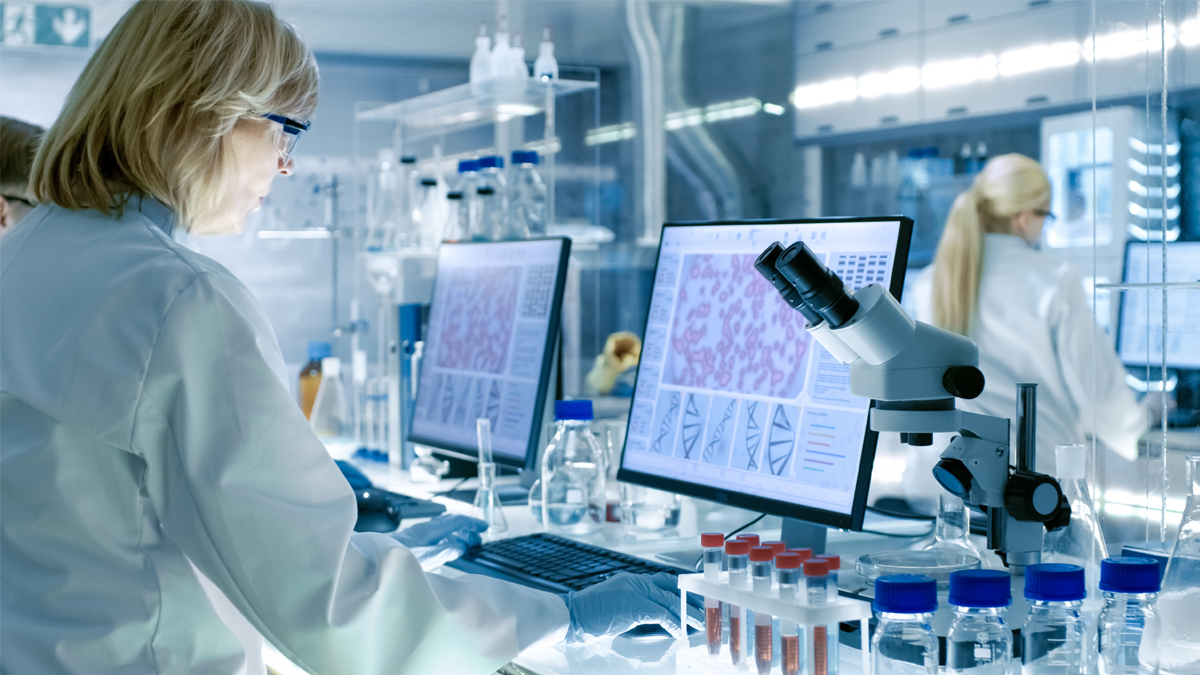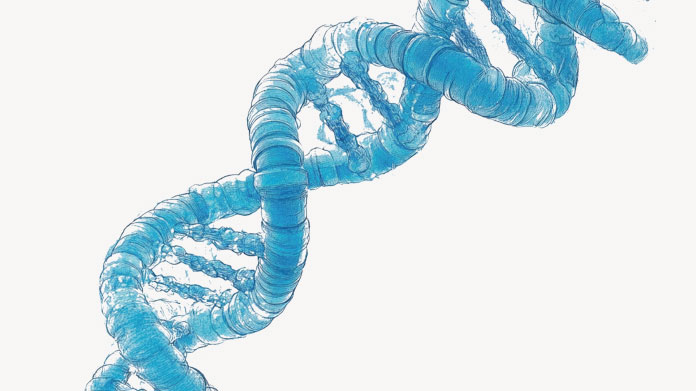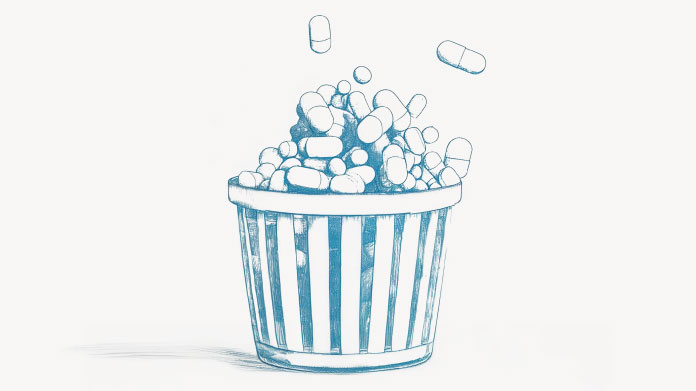Reversing ageing: major new breakthrough seen with NMN
A research team has just found a way of reversing this loss of ability using a compound that promotes the growth of new blood vessels : NMN (nicotinamide mononucleotide).

The older we get, the less stamina we have. It’s an inevitable regression which, at least for the moment, none of us can escape. The main cause is a gradual decline in our blood vessels, especially their ability to deliver the nutrients needed for the healthy function of muscle tissue.
The good news is that huge progress has been made in recent years in understanding the driving forces behind this decline and reducing its scope. A research team has just found a way of reversing this loss of ability using a compound that promotes the growth of new blood vessels.
Before designing this ground-breaking study, the researchers involved noted the following two points:
- Advancing age leads to a decline in the body’s levels of nicotinamide adenine dinucleotide (NAD) due to reduced NAD production and faster NAD degradation (1-3). NAD is a key coenzyme which is involved in many of the body’s cellular processes (4).
- It appears that NAD activates the genes responsible for production of sirtuins (5-7), proteins which line the inside of blood vessels and which several studies have linked to muscle ageing. Like NAD, sirtuin levels also decline with age, a serious development given that sirtuins, often referred to as "longevity proteins", are involved in numerous mechanisms throughout the entire body. This reduction in sirtuin levels is associated with many age-related health issues (heart problems, neurodegenerative diseases, etc.).
The researchers then posed a number of questions.
1) How do we know if the decrease in sirtuin levels in blood vessels is responsible for declining stamina?
To address this question, they deactivated the SIRT1 gene, which encodes major mammalian sirtuin, in six month-old mice. Without this gene, these mice would theoretically have significantly-reduced sirtuin activity in their blood vessels.
After a period of two months, the sirtuin-deprived mice were seen to have reduced capillary density compared with control mice of the same age, and to run only half the distance of their normal counterparts.
2) What would happen if sirtuin levels were increased in ageing mice? Would it improve their stamina?
Given that a decrease in sirtuin activity leads to a decline in stamina, could it be that increasing this activity would also increase capillary density and thus improve stamina? In order to confirm this theory, the researchers faced another challenge: how to increase sirtuin levels in blood vessels.
The scientific literature shows that supplementing with NAD is not the most appropriate option here as it is not absorbed as such by the body. The study’s authors therefore turned to a molecule which is both able to cross the intestinal barrier and is also converted into NAD in the body – in other words, a precursor. The most direct precursor of NAD, and indeed the one used by the researchers in their study, is NMN (nicotinamide mononucleotide).
After two months’ treatment with NMN, the ageing mice were found to have the same capillary density as their younger counterparts. In terms of exercise endurance, the researchers recorded a 56%-80% improvement in performance in the treated mice compared with untreated mice of the same age. Similar effects were subsequently observed in the mice at the age of 32 months, which corresponds to 80 human years!
Excited by these findings, the researchers immediately saw opportunities for restoring human muscle tissue lost in the course of ageing. Such interventions could help fight the effects of ageing and the fragility which leads to falls, osteoporosis and incapacitating conditions. “There’s a lot of reciprocity between muscle and bone”, commented one of the study’s authors, Leonard Guarente, “ so losing muscle mass can lead to a loss of bone”.
A more detailed look at NAD
What are the various precursors of NAD?
There are three pathways through which NAD is produced in the human body, each involving a different precursor that acts to boost NAD levels in cells.
a) De novo biosynthesis.
Tryptophan, an essential amino acid provided by the diet, is converted into NAD in the body via a number of intermediates.
b) The Preiss-Handler pathway
Niacin (NA), a form of vitamin B3 found in food, is converted first into NMN, and then into NAD.
c) The salvage pathway
The body is able to reform NAD molecules from nicotinamide (Nam) and nicotinamide riboside (NR), which are both precursors and degradation products of NAD. This is why this method is called the salvage pathway. Nam and NR are converted first into NMN and then into NAD.
Why not just supplement with NAD itself?
Studies show that NAD is broken down in the small intestine by intestinal epithelial cells (8). It is converted into NMN by several gut enzymes, and then into various metabolites such as NR and Nam. It is these metabolites which cross the intestinal barrier and then reach the body’s cells as a whole, where they are converted back into NAD.
So supplementing with NAD (or NADH) is by no means ineffective, but it is generally better to supplement direct with NMN, NR or Nam, in order to avoid these successive breakdown and reconversion stages. However, as NAD supplements are much less expensive than these precursor supplements, they are still an option worth considering.
Can NAD precursors be found in the diet?
To ensure de novo synthesis of NAD, the body needs tryptophan, the best sources of which are brown rice, meat, dairy products, eggs, soya protein, peanuts, pulses and nuts.
Nicotinamide riboside (NR) is found in milk (9), but the best sources of NAD precursors are raw foods (plant- or animal-source). The human digestive system, helped by gut flora, breaks down NAD from other organisms into various compounds which can be used to reform NAD via the ‘salvage pathway’ (10).
How can we increase our NAD levels?
1) Through supplementation with NAD precursors
NA (niacin) is a recognised NAD precursor but it often causes mild flushing (vasodilation) on the face and neck (11) when supplementation first begins. As for Nam (nicotinamide), while its ability to be converted into NAD is beyond doubt, it may moderate increases in sirtuin activity (12). The following two forms are therefore preferable:
- NR (nicotinamide riboside), more effective at boosting NAD levels and less expensive than either NA or Nam, and very well-tolerated (13). Supersmart offers a nicotinamide riboside supplement in the form of 125mg capsules.
- NMN (nicotinamide mononucleotide), the most direct precursor of NAD. It’s no coincidence that this was the compound used in the study referred to in this article: it’s considered by far the best in its category. It is not so widely-available but can be found in pro-longevity supplements such as Supersmart’s NMN supplement which comes in 50mg capsules. It has rapidly become the first choice supplement for those wishing to slow down the ageing process, despite its cost which matches its high popularity.
These are all forms of vitamin B3, a compound which is essential for every cell in the body. Deficiency in this vitamin is common and may manifest in tingling, loss of appetite, fatigue and mood swings.
2) Through increased physical activity and a healthier diet
The study’s authors found that exercise also stimulates the growth of new blood vessels and boosts muscle mass. However, when they deactivated the SIRT1 gene in the endothelial cells of certain mice and then subjected them to a four-week treadmill running programme, they found that exercise did not produce the same muscle gains as those seen in normal mice.
Previous studies had demonstrated the link between increased NAD levels and physical activity (14), as well as calorie restriction (15), two factors associated with longevity. In contrast, a high-fat diet (16-17) appears to accelerate the decline in NAD levels over the long-term …
Key points of the article
- Administration of NMN to ageing mice increased their capillary density and produced significant improvements in their exercise capacity.
- NMN is converted in the body into the coenzyme NAD, production of which declines with age. It plays a role in encoding proteins called sirtuins which are essential for healthy blood vessel and muscle function.
Will we one day know how to reverse the ageing process? And will we all be able to truly benefit from such an advance? One thing’s for sure: this study marks a turning point in the fascinating quest for immortality and clearly demonstrates that the limits of life expectancy can be pushed back still further. Provided, that is, that we rapidly take on board the new barriers to such progress: endless industrialisation of our food and the widespread prevalence of chronic stress.
Study at the centre of the article
Abhirup Das, George X. Huang, Michael S. Bonkowski, Alban Longchamp, Catherine Li, Michael B. Schultz, Lynn-Jee Kim, Brenna Osborne, Sanket Joshi, Yuancheng Lu, Jose Humberto Treviño-Villarreal, Myung-Jin Kang, Tzong-tyng Hung, Brendan Lee, Eric O. Williams, Masaki Igarashi, James R. Mitchell, Lindsay E. Wu, Nigel Turner, Zolt Arany, Leonard Guarente, David A. Sinclair. Impairment of an Endothelial NAD -H 2 S Signaling Network Is a Reversible Cause of Vascular Aging. Cell, 2018; 173 (1): 74 DOI: 10.1016/j.cell.2018.02.008
References
- Yoshino, J., Mills, K. F., Yoon, M. J. & Imai, S. Nicotinamide mononucleotide, a key NAD(+) intermediate, treats the pathophysiology of diet- and age-induced diabetes in mice. Cell Metab. 14, 528–536 (2011).
- Gomes, A. P. et al. Declining NAD(+) induces a pseudohypoxic state disrupting nuclear-mitochondrial communication during aging. Cell 155, 1624–1638 (2013).
- Braidy, N. et al. Mapping NAD(+) metabolism in the brain of ageing Wistar rats: potential targets for influencing brain senescence. Biogerontology 15, 177–198 (2014).
- Ying, 2008 W. Ying NAD+/NADH and NADP+/NADPH in cellular functions and cell death: regulation and biological consequences Antioxid. Redox Signal., 10 (2008), pp. 179-206
- Blander and Guarente, 2004 G. Blander, L. GuarenteThe Sir2 family of protein deacetylases Annu. Rev. Biochem., 73 (2004), pp. 417-435
- Hall et al., 2013 J.A. Hall, J.E. Dominy, Y. Lee, P. Puigserver, The sirtuin family’s role in aging and age-associated pathologies J. Clin. Invest., 123 (2013), pp. 973-979
- Haigis and Sinclair, 2010 M.C. Haigis, D.A. SinclairMammalian sirtuins: biological insights and disease relevance Annu. Rev. Pathol., 5 (2010), pp. 253-295
- Gross and Henderson, 1983, C.J. Gross, L.M. Henderson, Digestion and absorption of NAD by the small intestine of the rat J. Nutr., 113 (1983), pp. 412-420
- Trammell, S. A., Yu, L., Redpath, P., Migaud, M. E. & Brenner, C.Nicotinamide riboside is a major NAD+ precursor vitamin in cow milk. J. Nutr. 146, 957–963 (2016).
- Gazzaniga, F., Stebbins, R., Chang, S. Z., McPeek, M. A. & Brenner, C. Microbial NAD metabolism: lessons from comparative genomics. Microbiol. Mol. Biol. Rev. 73, 529–541 (2009).
- Birjmohun et al., 2005, Efficacy and safety of high-density lipoprotein cholesterol-increasing compounds: a meta-analysis of randomized controlled trials, J. Am. Coll. Cardiol., 45 (2005), pp. 185-197
- Anderson et al., 2003, Nicotinamide and PNC1 govern lifespan extension by calorie restriction in Saccharomyces cerevisiae, Nature, 423 (2003), pp. 181-185
- Trammell SAJ et al. Nicotinamide riboside is uniquely and orally bioavailable in mice and humans, Nature Communications volume7, Article number: 12948 (2016).
- Costford et al., 2010. Skeletal muscle NAMPT is induced by exercise in humans, Am. J. Physiol. Endocrinol. Metab., 298 (2010), pp. E117-E126
- Chen et al., 2008, Tissue-specific regulation of SIRT1 by calorie restriction, Genes Dev., 22 (2008), pp. 1753-1757
- Yoshino et al., 2011 J. Yoshino, K.F. Mills, M.J. Yoon, S. Imai, Nicotinamide mononucleotide, a key NAD(+) intermediate, treats the pathophysiology of diet- and age-induced diabetes in mice, Cell Metab., 14 (2011), pp. 528-536
- Kraus et al., 2014Nicotinamide N-methyltransferase knockdown protects against diet-induced obesity, Nature, 508 (2014), pp. 258-262
Keywords
44 Days
Very happy with the order and the…
Very happy with the order and the prompt team's response to an identified issue with my order.
KUQI Fatmir
52 Days
15 + years as a customer
I have been using their products for over 15 years as I find both the quality and pricing excellent.
Del Chandler
53 Days
Good quick delivery
Good quick delivery
Timothy O Shea
54 Days
Good service
Good communication following order. Product came within the time frame and was well packaged. The only confusing thing I found was in checking out. For some reason it is not clear how to do so and the current system should be improved.
Joe O Leary
64 Days
Simple and fast.
Simple and fast.
Nina
64 Days
Great product was definitely what is…
Great product was definitely what is says and arrived on without issue
customer
70 Days
I love reading those product facts on…
I love reading those product facts on Supersmart.com. Effective health products making permanent changes to my blood-work results and testes. However, I also have to order capsules from other websites.
NORDGULEN Olav
73 Days
Great products
Great products Very easy to choose, to order… and to get at home
Federica mastrojanni
75 Days
Service rapide et bons produits
Service rapide et bons produits
customer
77 Days
Good products and fast delivery
Good products and fast delivery
Trusted
81 Days
Does what it says on the can
I believe in this product Made to highest standard The ordering process is straightforward Delivery time prompt Excellent product, excellent service Happy customer ❤️
Sheba Kelleher
86 Days
Excellents produits
Excellents produits. Rien à dire si ce n'est qu'ils sont très chèrs.
MJS_France
89 Days
Very good supplement
Very good supplement
Glaveash
90 Days
Supersmart supplements are really…effective
Supersmart supplements are really effective and have helped me and family members and friends to improve their health including some of us with severe health problems including some with no existing medical treatment.
Anne Georget
91 Days
SuperBig Supersmart
SuperBig Supersmart
Pierre



